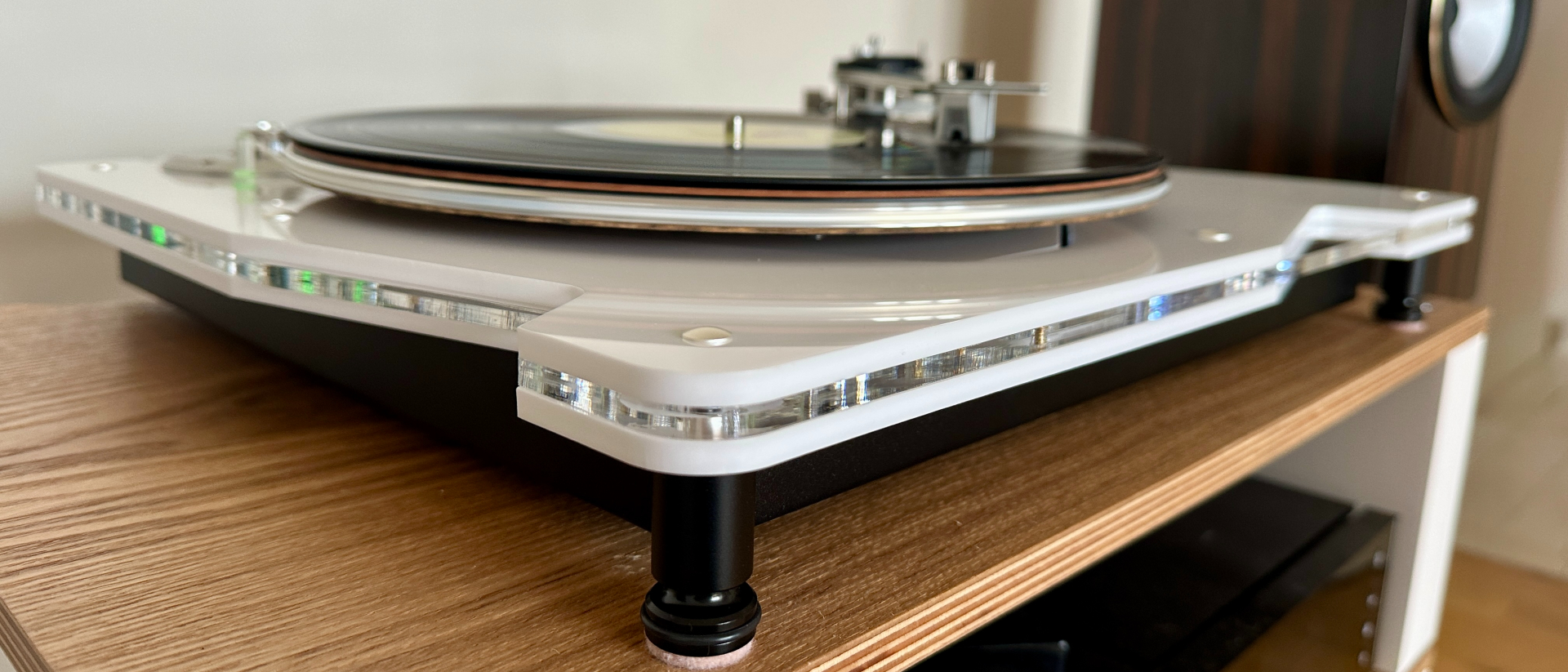TechRadar Verdict
Ready to go straight out of the box, simple to set up and no sort of hardship to listen to, the Vertere DG X is one of the company’s very best pound-for-pound products. Which is not something I say lightly.
Pros
- +
Engaging, informative and entirely unified sound
- +
Impressive (and exhaustive) specification
- +
Great standard of build and finish
Cons
- -
Not the last word in sonic drive or attack
- -
Plenty of very capable alternatives
Why you can trust TechRadar
Vertere DG X: two-minute review
Put $5,400/ £4,150 / AU$8,500 Vertere’s way and in return you get a beautifully constructed DG X turntable, a strange-looking but remarkably capable Groove Runner X tonearm, and a cartridge that’s a lot more serious than the model name ‘Lite Sabre’ might lead you to believe. Although this review is titled 'Vertere DG X' for brevity, I'm reviewing the full package here: Vertere DG X / Groove Runner X / Lite Sabre – and what a package it is.
What’s more, you get a proper power supply and equally capable cables too. You even get a dust-cover. The DG X package is simplicity itself to set up – all the hard work has been done in the factory – so your sonic gratification need not be deferred very long at all.
And gratification is really what the Vertere DG X is dealing in – it'll be the reason it soon features in our pick of the best turntables, at any rate. It might lack the last scintilla of audio bolshiness, and not be quite as willing as some alternative designs to really attack those recordings that are, let’s face it, asking for it. But in every other respect it’s a thrillingly accomplished listen. Where control, balance, tonal fidelity, frequency response, rhythmic expression and all the other stuff that goes into making a rounded and convincing presentation, the DG X barely puts a foot wrong. And it’s engaging and entertaining at the same time – which is by no means a given no matter how much you’re spending on a record player.
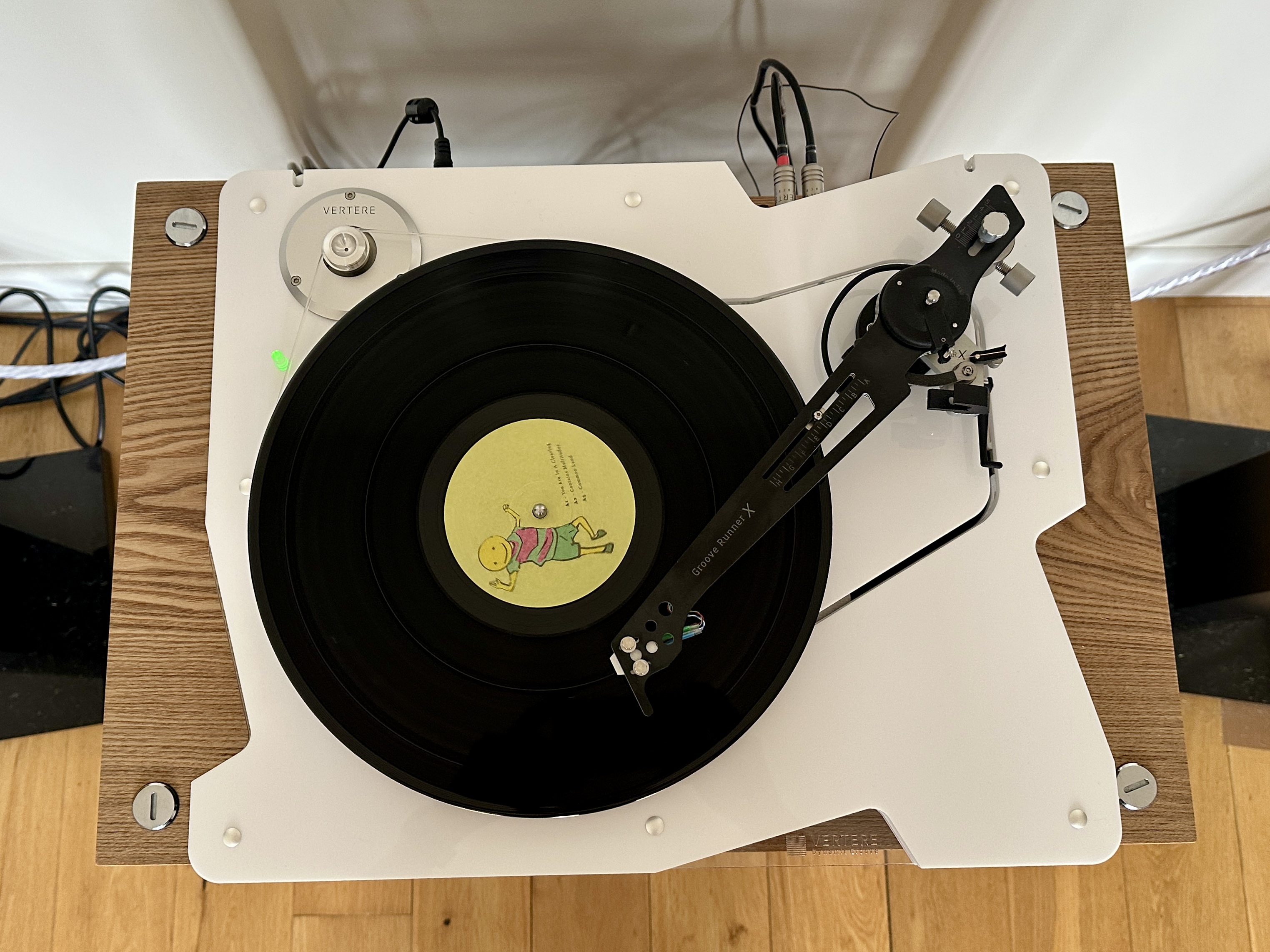
Vertere DG X review: Price & release date
The Vertere DG X / Groove Runner X / Lite Sabre package was released on March 20, 2025, and in the United Kingdom it’s yours for £4150. In the United States it sells for $5400, while in Australia the going rate is AU$8500.
There are two equally important things to bear in mind when considering this asking price. The first is that there are plenty of very capable turntable/tonearm/cartridge combinations available at this sort of money from extremely well-regarded manufacturers. The other is that Vertere itself is now firmly established as an extremely well-regarded manufacturer…
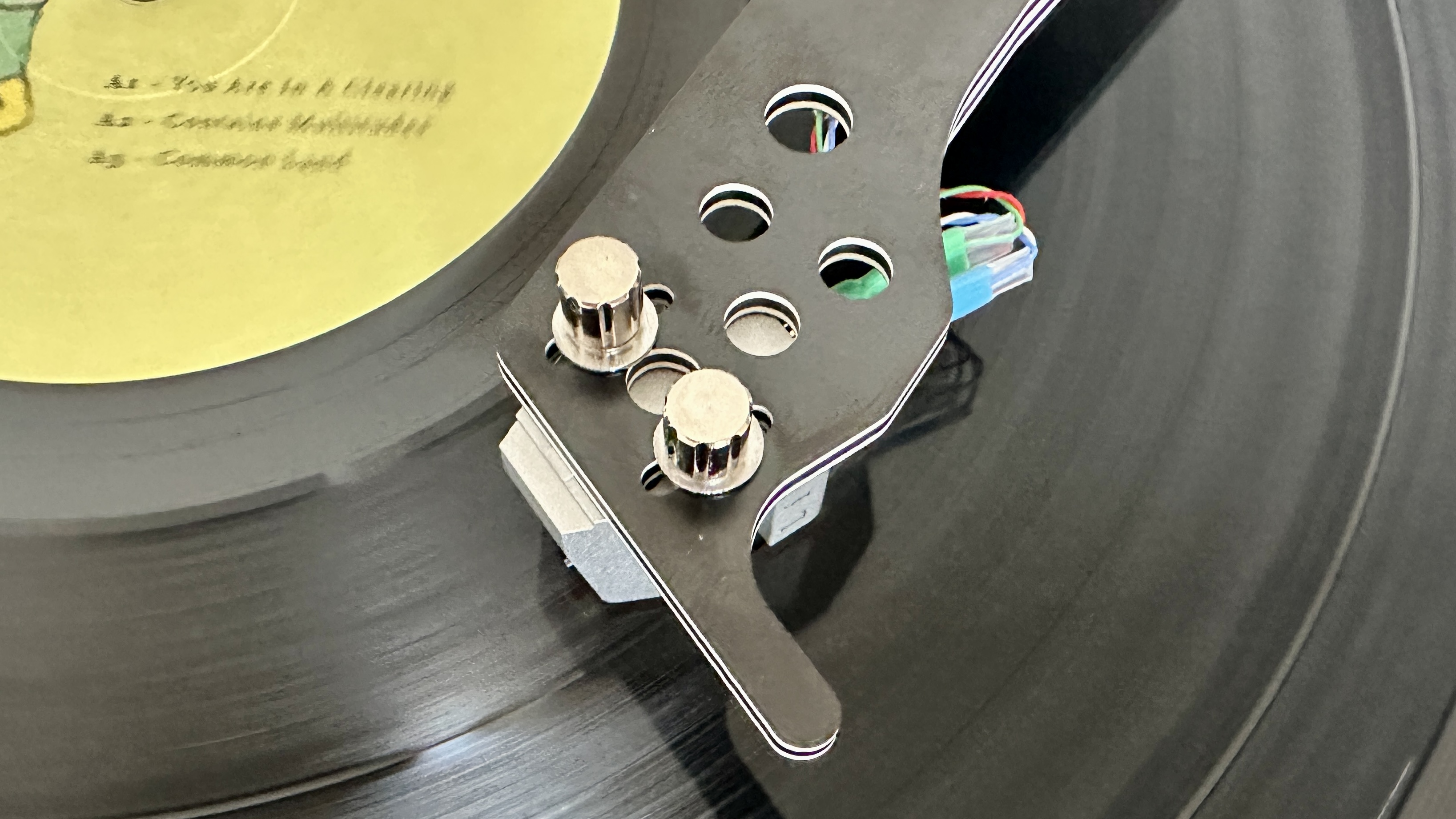
Vertere DG X review: Features
- Microprocessor-controlled belt drive (33.3 and 45rpm)
- Tri-point articulated tonearm bearing system
- Vertere DC-2 bespoke power supply
Somehow ‘features’ seems too weak a word to describe the lengths Vertere has gone to, and the engineering mania that has been brought to bear, to deliver the DG X / Groover Runner / Lite Sabre package. Still, it’s the word I’ve been given to work with – so here goes…
The DG X turntable has a main bearing housing made of precisely machined brass alloy, with a tungsten carbide thrust ball. Its non-magnetic stainless steel spindle is mirror polished, and it features aluminium alloy plinth interface clamps. The drive system is made up of a machined acetal motor spindle thrust bearing, a machined aluminium alloy pulley along with a resonance control disc of the same material. The platter it turns is also (mostly) of machined aluminium, and Vertere supplies a cork/neoprene/nitrile mat which has, so it claims, a positive effect on the resulting sound. 33.3 or 45rpm speeds are electronically selectable via microprocessor-controlled motor drive – a silicon drive belt does the donkey work.
The Groover Runner tonearm, meanwhile, is 240mm long and an unusual flat shape. It’s made up of two bonded lengths of five-layer polymer – the idea is to minimise the resonance peak inherent in the more common tube arm designs. It’s a tri-point articulated design, and uses three captive silicon nitride balls with a machined non-magnetic bearing point. It’s similar in this way to the far more upmarket Vertere SG 1 turntable’s tonearm assembly. The azimuth setting mechanism and stainless steel counterweight have been updated - there’s now a locking aluminium alloy counterweight screw – and there’s a secondary weight that’s adjustable along much of the length of the tonearm to help with cartridge-matching.
The tonearm beam features a magnetic rest, so the arm doesn’t need to be clipped into place when it’s not active. The lift/lower mechanism is insulated, and is fixed to the non-resonant bearing pillar. The arm is pre-fitted with a new moving-magnet cartridge called Lite Sabre – it might seem a slightly flippant, pun-tastic name at first, until you realise it’s designed to offer a lot of the performance of the company’s considerably pricier Sabre MM cartridge. Naturally it’s optimised in every respect to be the perfect partner to the arm and the turntable it’s wedded to.
Power is supplied by Vertere’s DC-2 ‘Challenger’ 30V DC unit that was, until very recently, a cost option. Some very acceptable stereo RCA connection cables are included in the package too – so as far as the DG X system goes, you have everything you need to get up and running.
- Features score: 5 / 5
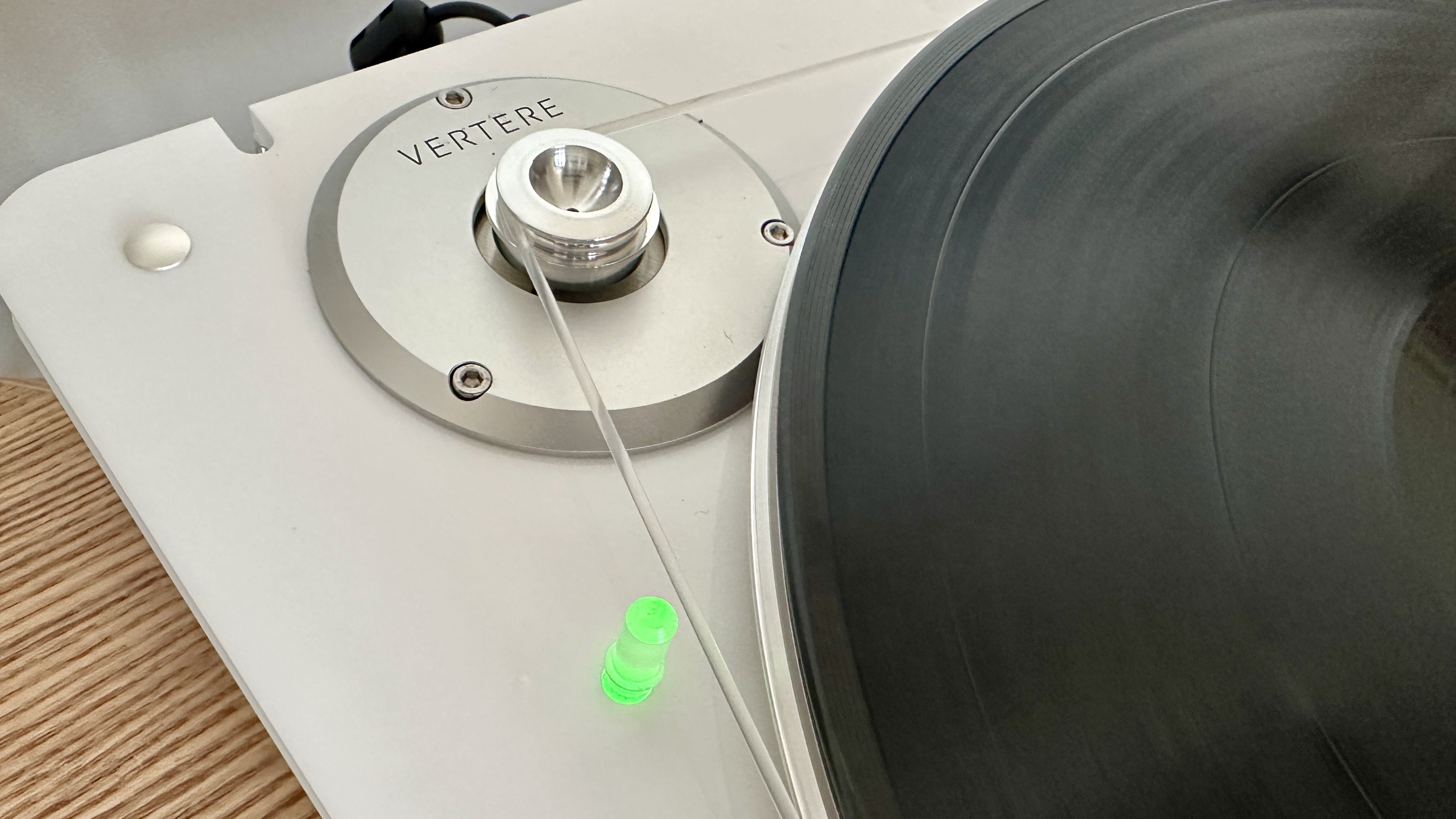
Vertere DG X review: sound quality
- Sky-high detail retrieval
- Rhythmically positive and assured
- Tightly unified overall presentation
I may as well get this out of the way from the get-go: the Vertere DG X package isn’t a complete all-rounder. It very nearly is, but in one respect this turntable falls fractionally short. That’s not to say it wouldn’t be ideal for your purposes, of course – but nevertheless it’s something you should be aware of.
Basically, the DG X isn’t quite as attacking or driving as it might be. With a fairly assertive recording playing (a chunky reissue of Pere Ubu’s The Modern Dance, for instance) there’s not quite the charge or the onslaught the material demands. It’s not that the DG X is overly polite – it’s prepared to bare its teeth if it absolutely has to. But other price-comparable rivals are more willing to blitz through the recording than this record player is.
And with that out of the way, I’m free to discuss all the very many ways in which the DG X is an admirable, engaging and thoroughly convincing listen. Where to start?
With frequency response, maybe? It’s absolutely even from top to bottom; the DG X delves deep into the lower frequencies and reaches high at the top end, but no area of the frequency range is overstated and no area is underplayed. It’s even-handed and unified, and the overall presentation is brilliantly naturalistic as a result.
Tonally, too, the Vertere is expertly judged. There just doesn’t seem to be any significant input into tonality from the DG X – so when you listen to something warmly analogue like Heart of the Congos by The Congos, ‘warmly analogue’ is what you get, and when you listen to something rather more chilly and austere like Kraftwerk’s Trans Europe Express what you get is chilly an… well, you get the picture. The tonal balance of this record player seems to be dictated by the music it’s playing rather than any idea of what’s ‘correct’, and it’s an impressively balanced listen as a result.
Detail levels, across the board, are sky-high – and the DG X seems to have no problem identifying the most transient episodes in a recording and placing them into context with just the right amount of weighting. Despite its attention to detail, though, it never sounds analytical or dispassionate – it simply has a happy knack for extracting every shred of information in the groove of your record and handing it over in a completely unforced manner.
Rhythms are confidently expressed, thanks to the sort of low-frequency control and authority the Vereter demonstrates, and even the gimpy tempos of Tony Allen’s Lagos No Shaking roll along as if they’re the most natural and simple thing in the world. The attention the DG X pays to harmonic variations is fanatical, and it has the sort of effortless power to put significant distance between the quietest and the most vehement moments of a recording. When the horns really start to blare, the increase in volume and intensity is made absolutely apparent.
And all of this good stuff happens without sacrificing the sort of unity and singularity of presentation for which the vinyl format is routinely prized. There’s a sense of togetherness and of performance to the way the Vertere presents music that’s extremely persuasive – and this is the case even when it’s playing music that never was a performance. Four Tet’s And They All Look Broken Hearted sounds as whole and as singular as any recording by a band playing all together in the studio.
- Sound quality score: 4.5 / 5
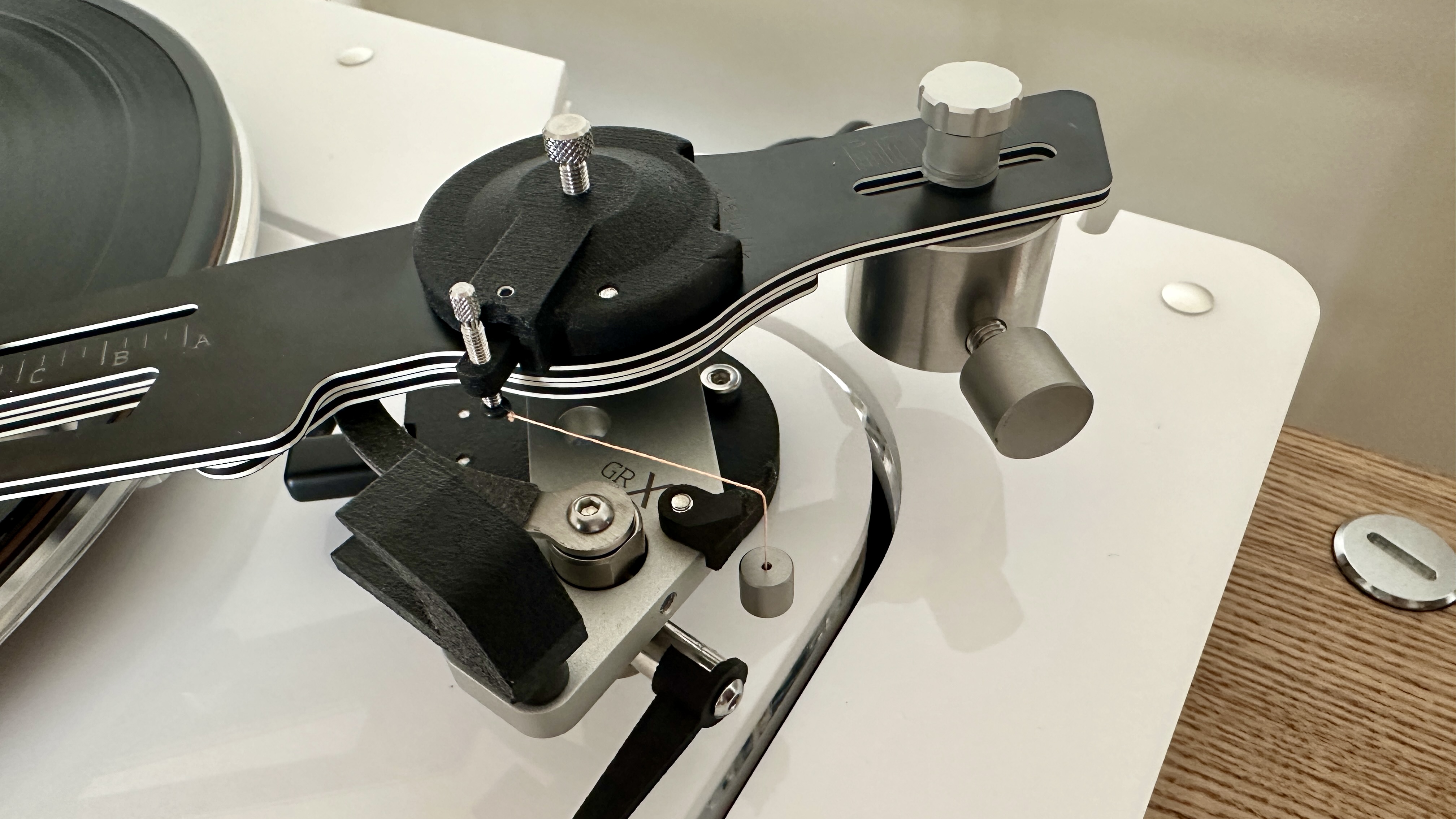
Vertere DG X review: Design
- 130 x 469 x 384mm (HxWxD including dust cover)
- Black, white or red gloss finishes
- Adjustable feet
Fundamentally, the DG X looks like a record player, but Vertere has managed to design just a little individuality into it. The company will of course tell you that everything it’s done, it’s done in the name of performance – but the fact that the result is a turntable that’s just slightly individual and even mildly dramatic in the way it looks can’t have disappointed Vertere either.
The main plinth, with its racy little angular cutaways on each of its four sides, is made up of three layers of cast acrylic arranged in a non-resonant sandwich. The filling is clear, and internally illuminated for a little visual pizzazz; the upper and lower sections are available in gloss black or gloss red as well as the gloss white of my review sample.
The substructure is a black-coated zintec steel chassis, and the entire arrangement is supported on three threaded feet that are topped (or, more correctly, bottomed) with resistive felt. They’re adjustable, naturally, so you can be sure your DG X is perfectly level. A spirit gauge is provided so you can make absolutely certain.
On the rear of the plinth, along with an input for the mains adapter, there are a pair of gold-plated RCA output sockets. Like almost every electrical element of this package, they have selectable shielding – choose from ‘signal’, ‘chassis’ or ‘floating’.
The DG X is supplied with a tinted acrylic dust-cover, and as is appropriate in the overall context of this turntable, it is designed to be as resistant to resonance as is possible. With the dust-cover attached to its hinges, the all-in weight of the Vertere is 8.5kg.
- Design score: 5 / 5
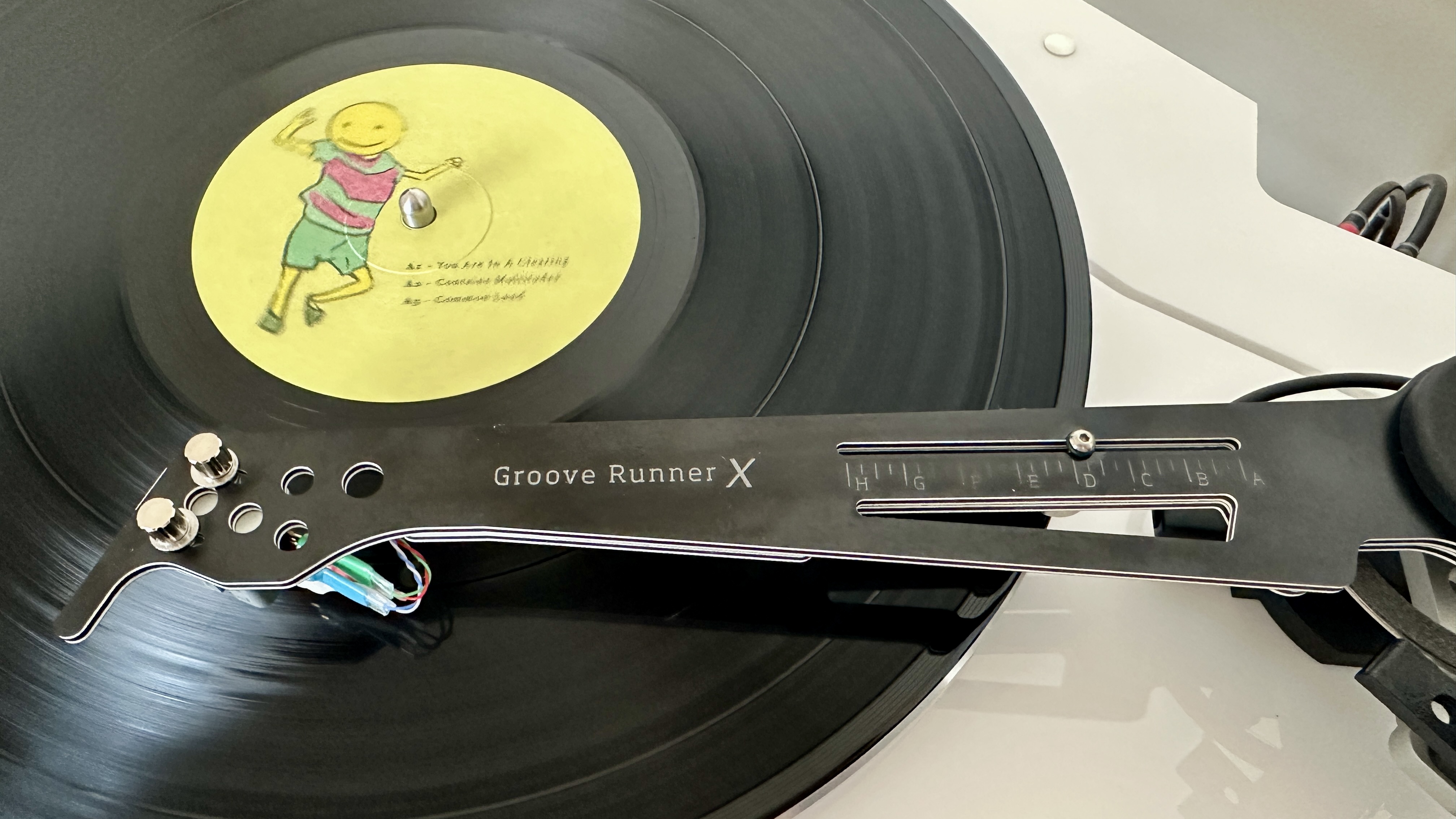
Vertere DG X review: Usability & setup
- Pre-fitted and pre-adjusted cartridge
- Simple anti-skate adjustment
- Both counterweights factory-set
It’s not unheard-of for an upmarket and shamelessly ‘audiophile’ turntable to be simple and straightforward to set up – it’s just quite rare. So it’s nice to be able to add the Vertere DG X package to the list.
As the Lite Sabre arrives connected to the Groove Runner X tonearm, everything that needs to be done has already been done in the factory. Tracking weight adjustment? Vertical tracking angle? Anti-skate, azimuth and counterweight? All taken care of. All you have to do is position the tonearm and plug its cable (which is terminated with what looks very much like a microUSB socket) into the body of the plinth and you’re in business. Well, once you’ve made a connection to an amplifier and to mains power, anyway.
And as far as usability goes, well, this is a record player – there’s next-to-nothing to it. The speed control is on a switch on the top left of the plinth as you look down on it - short presses toggle between 33.3 and 45rpm, and a long press switches the deck either on or off. Put a record on the mat, set it turning at the correct speed, lower the tonearm – and you’re in business.
- Usability and setup score: 5 / 5
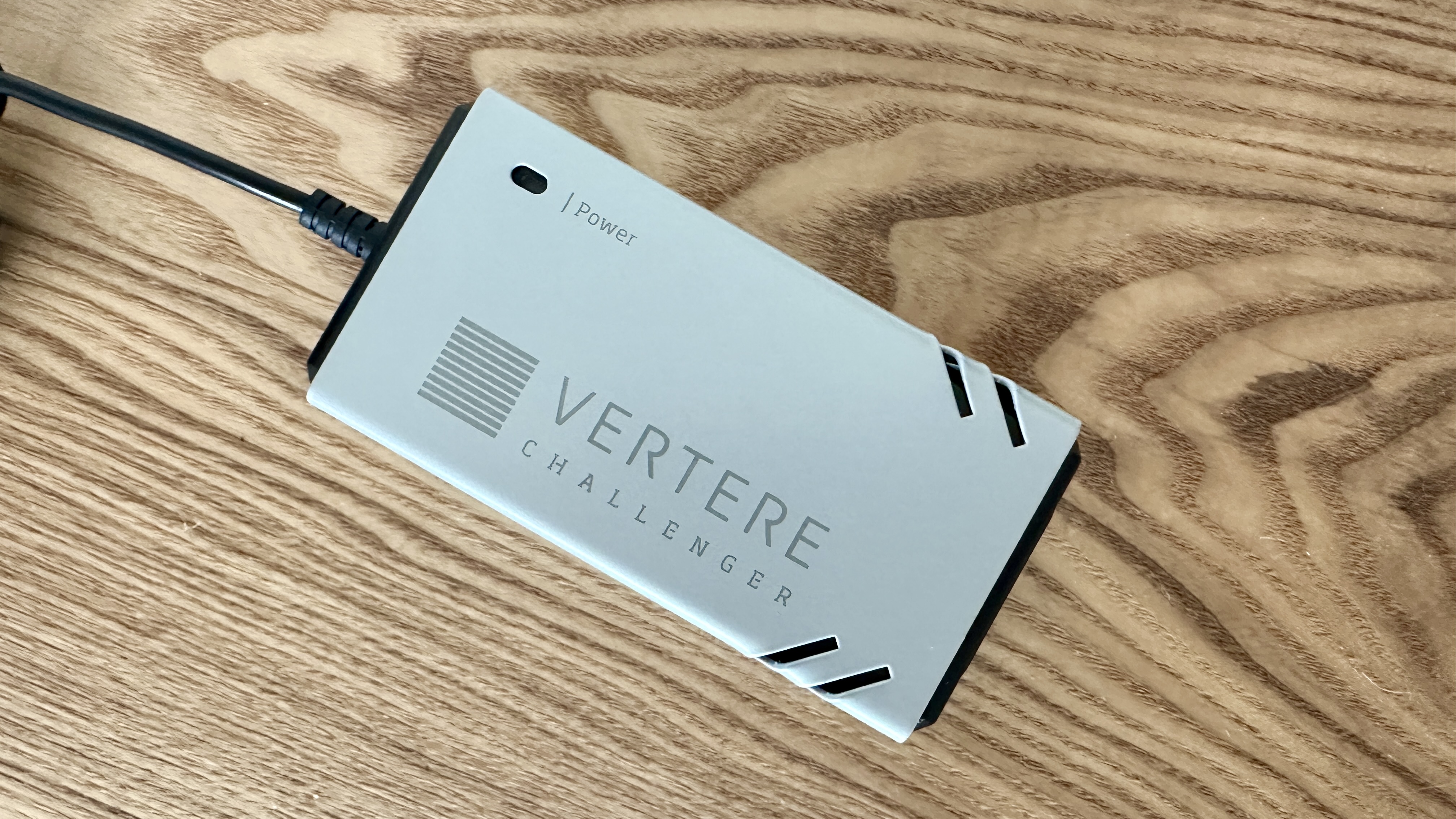
Vertere DG X review: Value
‘Value’ is a slightly tricky consideration where products like this, at this sort of money, are concerned. After all, shouldn’t spending north of £4K on a turntable guarantee impressive build quality, flawless finish and stunning sound quality?
If you’ve read this far then you know all of this is covered by the Vertere DG X – and you also know that if you’re going to take full advantage of what this record player has to offer, you’ll need a similarly expensive system with which to do so.
There’s no disputing this product’s credentials, and by extension the value for money it offers. Ultimately, it’s going to depend on whether or not you enjoy the way the DG X looks, and even more importantly, the way it goes about doing the audio business…
- Value score: 4.5 / 5
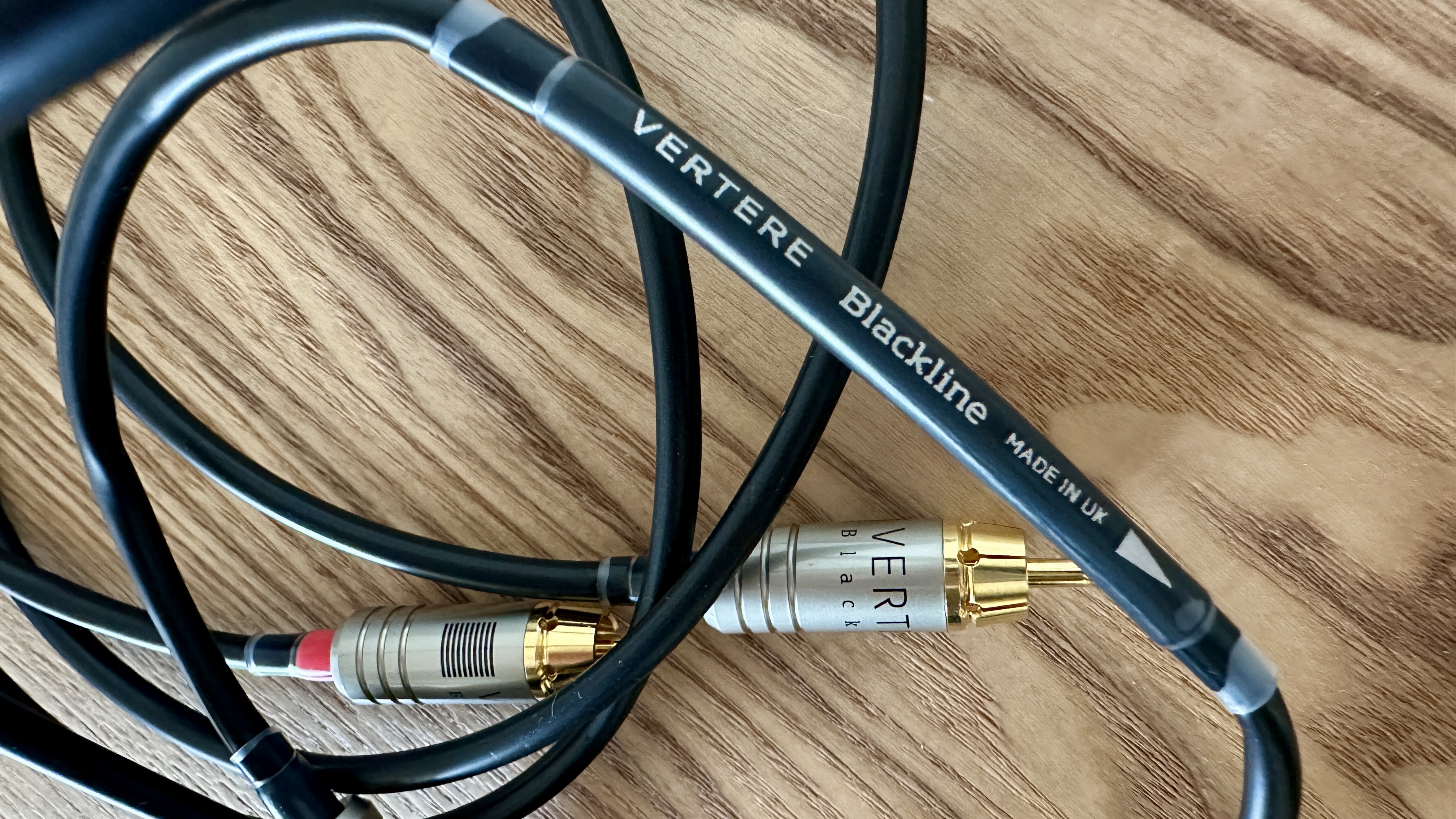
Should I buy the Vertere DG X?
Attributes | Notes | Rating |
|---|---|---|
Features | Impressive (exhaustive, even!) specification | 5 / 5 |
Sound quality | Engaging, insightful and unified; just marginally undersells drive and attack | 4.5 / 5 |
Design | Intriguing build and finish – but thoroughly classy with it | 5 / 5 |
Usability & setup | Simple and refreshingly easy to set up – especially for a 'serious' deck | 5 / 5 |
Value | Hard to put a price on this kind of quality, but if you have the money, it's worth it | 4.5 / 5 |
Buy it if…
You enjoy a full and unequivocal account of your records
The DG X package doesn’t scrimp on the details - quite the opposite, in fact
You think this sort of money should by everything you need in a record player
From power supply and cables to a pre-fitted and pre-adjusted cartridge, the Vertere is ready to go
You like a bit of thoughtful design
The DG X is just individual enough in its design to count as ‘interesting’
Don't buy it if…
You want sonic blood and thunder
The DG X is talented in very many ways, but it’s not the most attacking listen
You don’t have particularly steady hands
The Groove Runner X tri-point articulated tonearm can feel perilously loose. It isn’t, of course, it just feels it…
You own lots of 78rpm recordings
Plenty of alternative designs can indulge your throwback ways…
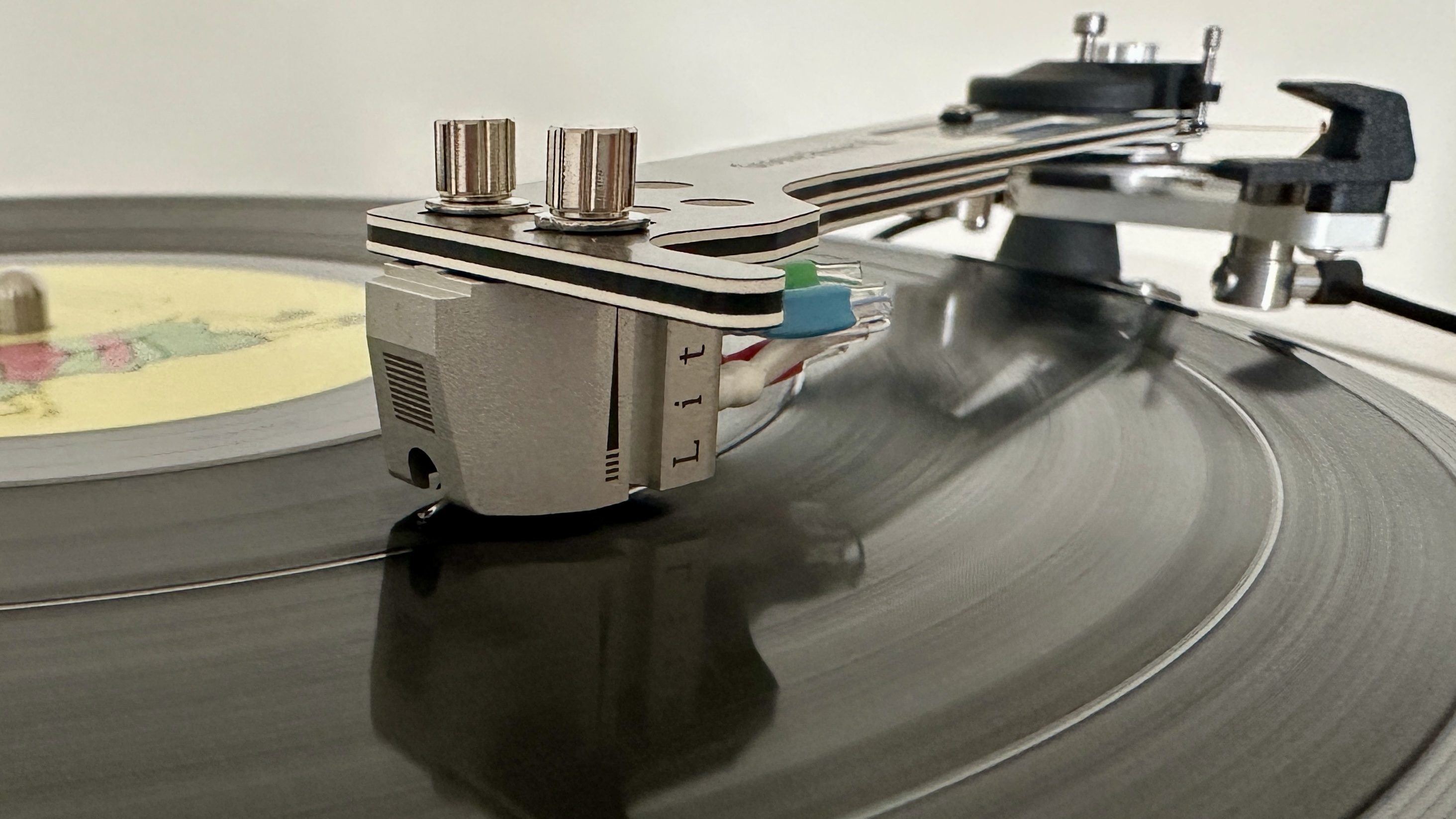
Vertere DG X review: Also consider
Technics SL-1300G
The Technics SL-1300G will set you back $2,999 / £2,799 – but by the time you’ve specified an appropriate cartridge you’ll be rapidly closing in on Vertere DG X money. Sturdy and purposeful in appearance where the Vertere is relatively slender and delicate, the Technics is a potent and unshakably stable listen with plenty going for it where rhythmic expression and detail retrieval is concerned.
Read more on the Technics SL-1300G
Rega Planar 10
…Or you might go to the other visual extreme and consider the Rega Planar 10 – at $5,000 / £4,350 or so without a cartridge it’s a pricier proposition than the Vertere, and that money doesn’t seem to buy you very much stuff at all. But rest assured the Rega is a stunningly complete performer without a significant shortcoming to report on…
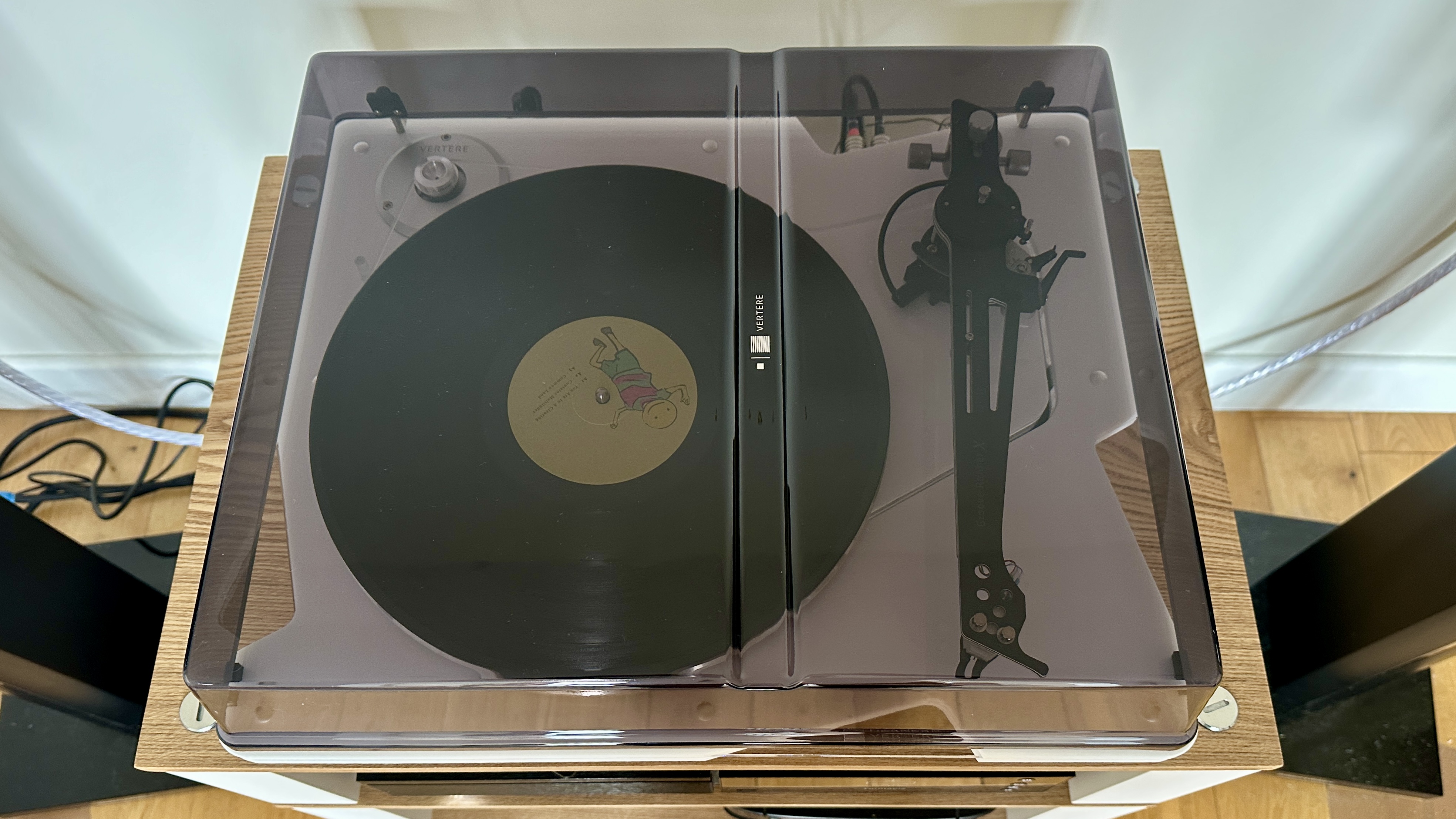
How I tested the Vertere DG X
How did I test the Vertere DG X / Groove Runner X / Lite Sabre? After setting it up, I connected the turntable to a Naim Uniti Star using the supplied RCA connections. The Naim was then connected to a pair of Bowers & Wilkins 705 S3 Signature loudspeakers (bolted to their bespoke FS-700 S3 stands) using QED XT40i speaker cable.
Then, I spent well over a working week listening to as much music as I could, of many different genres, and of many different qualities of pressing, in an effort to find something the Vertere couldn’t get along with. And if this sounds in any way arduous, I assure you it wasn’t.
- First reviewed: April 2025
- Read TechRadar's reviews guarantee
Simon Lucas is a senior editorial professional with deep experience of print/digital publishing and the consumer electronics landscape. Based in Brighton, Simon worked at TechRadar's sister site What HiFi? for a number of years, as both a features editor and a digital editor, before embarking on a career in freelance consultancy, content creation, and journalism for some of the biggest brands and publications in the world.
With enormous expertise in all things home entertainment, Simon reviews everything from turntables to soundbars for TechRadar, and also likes to dip his toes into longform features and buying guides. His bylines include GQ, The Guardian, Hi-Fi+, Metro, The Observer, Pocket Lint, Shortlist, Stuff T3, Tom's Guide, Trusted Reviews, and more.
You must confirm your public display name before commenting
Please logout and then login again, you will then be prompted to enter your display name.
